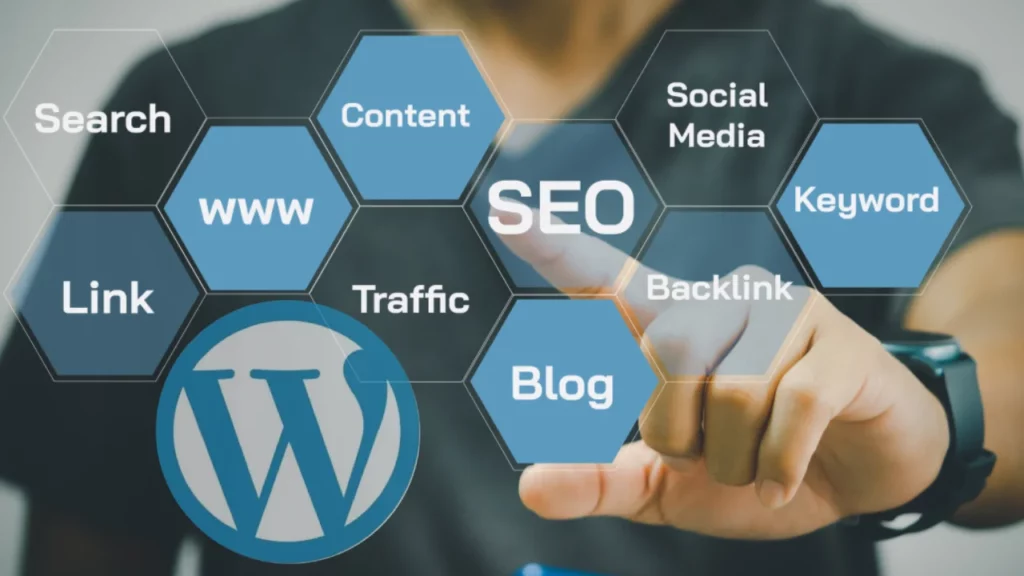
Exploring Static Site Generators: Benefits of Improved Performance, Security, and Deployment Ease
August 15, 2023Welcome to the comprehensive guidelines for setting up a WordPress website in an SEO-friendly manner. In today’s digital landscape, search engine optimization (SEO) is paramount for ensuring your website’s visibility and success.

These guidelines are designed to provide you with clear, actionable steps to optimize your WordPress site effectively. From structuring permalinks to optimizing images and managing plugins, every aspect covered in this guide is essential for enhancing your website’s performance in search engine results pages (SERPs) while improving user experience. Let’s dive in and explore the key strategies for maximizing the SEO potential of your WordPress website.
Navigation, Permalinks, and Breadcrumbs
Efficient navigation, structured permalinks, and breadcrumbs are crucial for enhancing user experience and search engine visibility.
- Permalink Structure Example:
- Top Level: www.yourdomain.ie/digital-marketing/
- Second Level: www.yourdomain.ie/digital-marketing/seo
- Third Level: www.yourdomain.ie/digital-marketing/seo/inbound-marketing
- Ensure each parent page links to child pages, maintaining a clear hierarchy.
- Permalinks Best Practices:
- Opt for descriptive, hierarchy-expressing formats without extraneous elements like ‘.php’.
- Breadcrumbs should accurately reflect the page’s position in the site hierarchy.
WordPress Limitations and Best Practices
WordPress imposes limitations on permalinks. Hence, prioritize parent-child hierarchy and template diversity over custom post types.
- Page Hierarchy Guidelines:
- Maintain a specific HTML hierarchy across pages, posts, and products.
- Limit H1 usage to once per page, H2 ideally 1-8 times, and H3 similarly.
- Avoid using H1-H3 elements in the sidebar, footer, or modular popups to maintain content hierarchy integrity.
Optimizing Images
Proper image optimization is vital for improving site performance and SEO.
- Optimization Levels:
- Restrict image size to prevent large uploads.
- Convert images to WEBP format for better compression.
- Optimize image dimensions and file sizes based on usage.
- Ensure descriptive filenames and relevant alt text for accessibility and SEO.
Theme Settings, ACF Usage, and Archive Pages
Utilize WordPress theme settings effectively, prioritize default content boxes, and ensure functional archive pages.
- Theme Settings:
- Configure default icons and logos, even if not visually used, for schema markup consistency.
- Utilize default content boxes for primary content display, aiding SEO evaluation tools.
- Archive Pages and ACF:
- Maintain functional archive pages for categories, tags, and custom post types.
- Avoid hardcoding content to facilitate easier updates and maintenance.
Plugins, Website Speed, and SEO Setup
Mindful plugin usage, optimization for speed, and thorough SEO plugin setup are essential.
- Plugin Usage:
- Limit unnecessary plugins, opting for premium ones when needed.
- Prioritize speed optimization plugins like Asset Cleaner and WP Rocket.
- SEO Setup:
- Configure SEO plugins comprehensively before launch, including logo, schema markup, and social meta.
Sitemaps, 404 Tracking, and Redirections
Ensure accurate sitemaps, track 404 errors, and implement 301 redirects for optimal site performance.
- Sitemaps and Tracking:
- Utilize Rank Math for HTML sitemaps to ensure automatic updates.
- Implement 404 tracking and exclusions for specific file types.
- Redirections and Canonical Setup:
- Utilize Rank Math for 301 redirections and canonical setup.
- Noindex page fragments and irrelevant elements for streamlined SEO.
Blog Management
Audit blog tags and categories, noindexing irrelevant ones to streamline SEO efforts.
Conclusion:
Congratulations on completing the guidelines for setting up a WordPress website in an SEO-friendly way! By following these recommendations, you’ve equipped yourself with the knowledge and tools necessary to optimize your website for search engines effectively. Remember, SEO is an ongoing process, so continue to monitor your site’s performance, adapt to algorithm updates, and refine your strategies accordingly. With dedication and attention to detail, your WordPress website will continue to attract organic traffic, engage visitors, and achieve your business objectives. Thank you for investing the time and effort into optimizing your website for success in the digital landscape.


